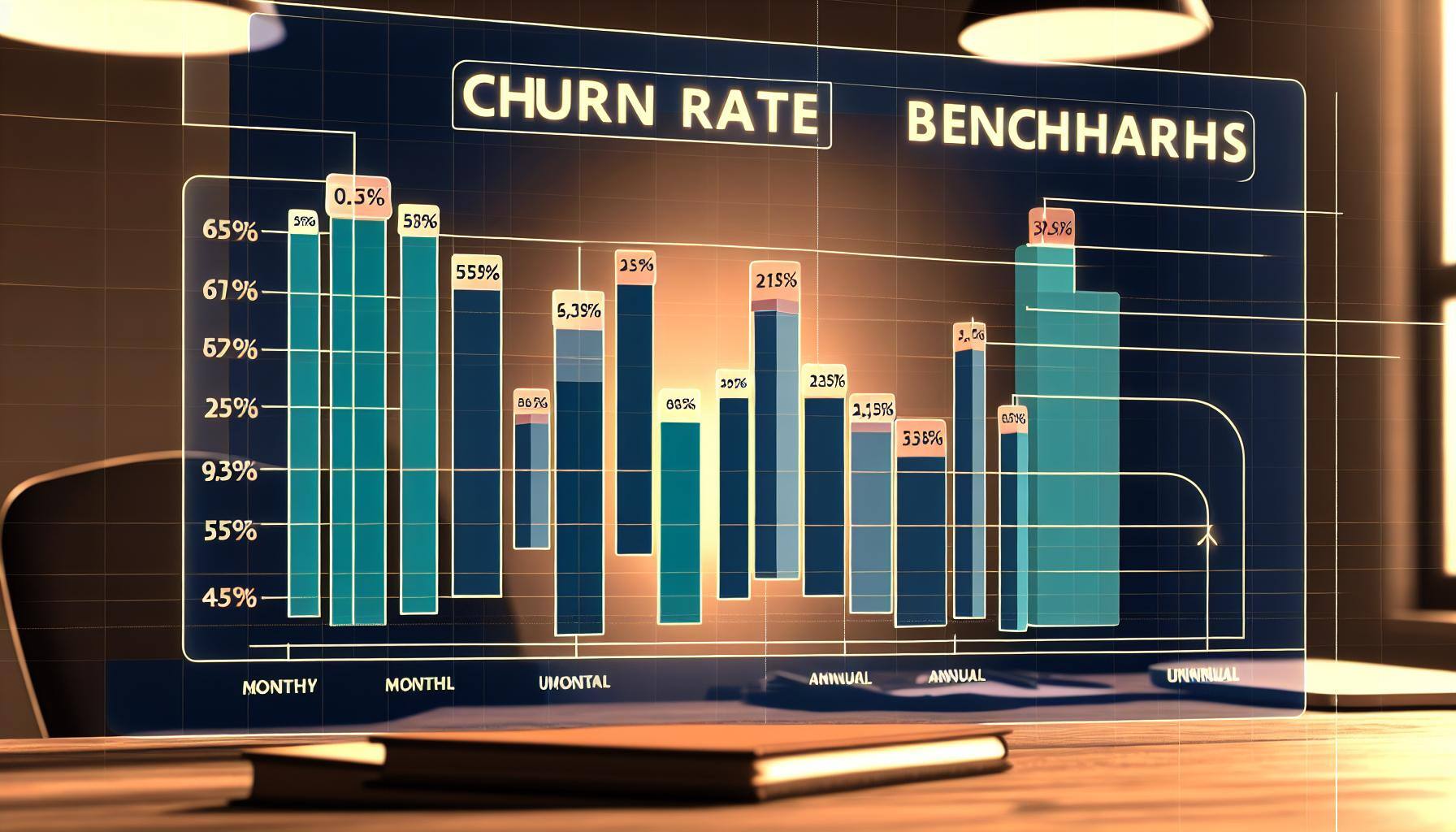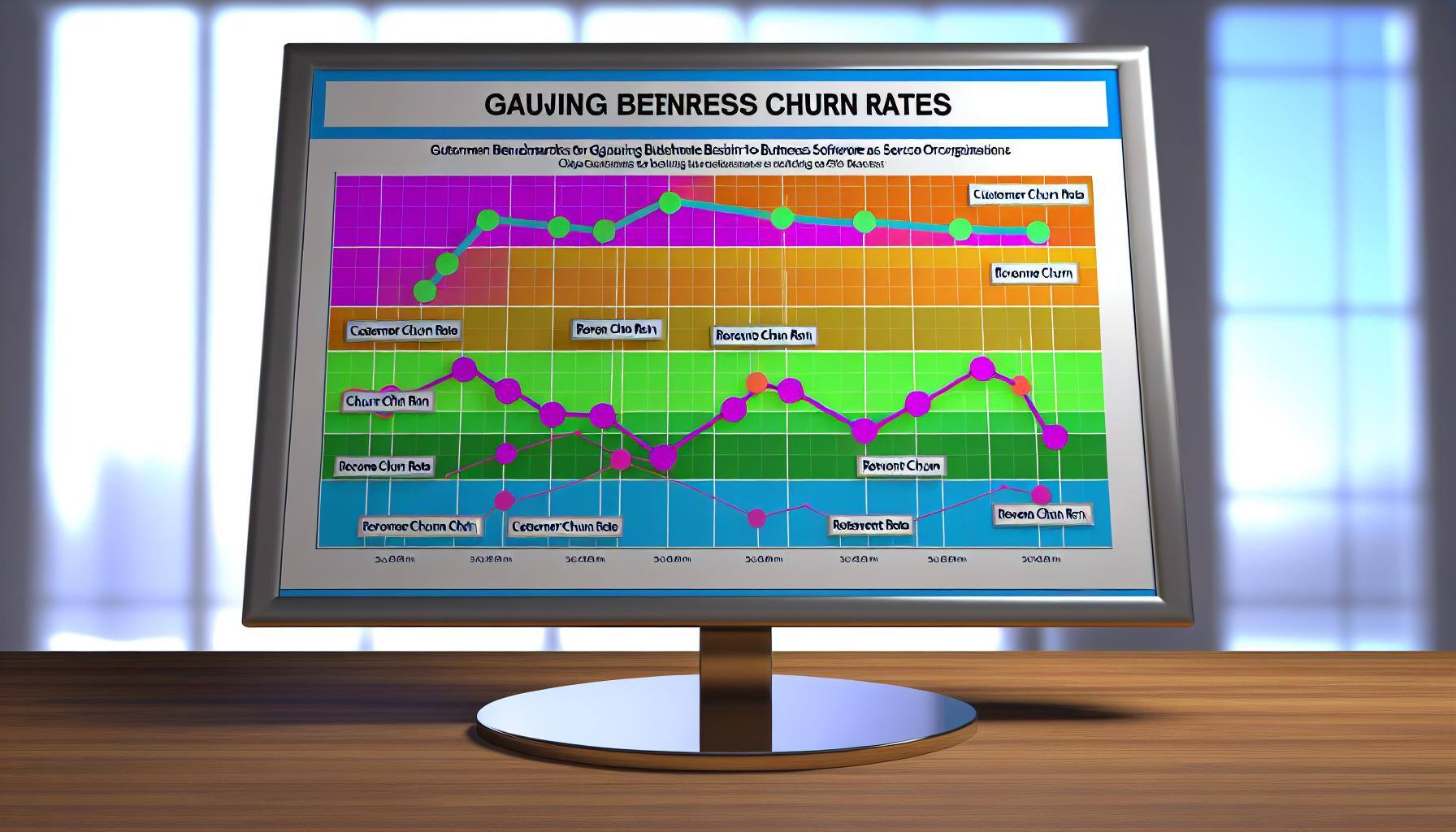Effective Ways to Reduce Customer Churn in B2B SaaS Companies
Customer churn represents a critical challenge for B2B SaaS companies. Churn occurs when customers stop using a product or service, leading to lost...
7 min read
Brian Polackoff
:
May 24, 2024 9:03:00 AM

The concept of churn and its relentless impact on SaaS (Software as a Service) businesses cannot be overstated. In an industry where success hinges on sustaining long-term relationships with customers, understanding and managing churn rate is pivotal. This article delves into the multifaceted nature of churn, exploring its implications, the distinction between its types, the paradoxical concept of negative churn, and why neglecting churn metrics could spell disaster for SaaS companies. Furthermore, it will outline strategies to mitigate high churn rates, thereby enhancing customer lifetime value and ensuring the enduring success of a SaaS business.
For many SaaS companies, a high churn rate is a glaring indicator of customer dissatisfaction, often leading those likely to churn away from the service. It signifies that a significant portion of customers do not find enough value in the service to renew their subscription. In the dynamics of SaaS business models, where the emphasis is on long-term customer retention over one-time sales, high churn rates can fundamentally undermine the business's financial health and growth prospects. Essentially, when customers churn, it often reflects issues beyond just the product, such as inadequate customer support or a lack of essential features, pointing to areas that need immediate improvement.
High churn rates directly jeopardize MRR, the lifeblood of any SaaS business. With each customer that decides not to renew their subscription, the company not only loses the expected revenue from that customer but also incurs a loss in potential upsell opportunities. This erosion of the customer base, often due to unavoidable churn, requires constant and costly customer acquisition efforts to fill the gap left by departing customers. Consequently, high churn rates can stifle the business’s ability to grow, eating into profit margins and making it difficult to invest in product development or market expansion. SaaS businesses operate on the premise of compounding growth month over month; high churn disrupts this model, making sustainable growth challenging to achieve.
The level of churn deemed acceptable can vary widely across different SaaS sectors, each with its own definition of a good churn rate. B2B SaaS companies, for instance, often experience lower churn rates compared to B2C counterparts due to the longer decision-making and implementation processes involved. Monthly and annual churn rate benchmarks provide a barometer for SaaS companies to gauge their performance against industry standards. However, it's crucial to understand that even if benchmarks are met, any churn represents lost opportunities to increase MRR and improve customer lifetime value, part of the unavoidable churn companies face. Striving for the lowest possible churn is always desirable, as every customer retained is a testament to the value the service provides.
Churn in SaaS can generally be categorized into two types: customer churn and revenue churn. Customer churn measures the number of customers who do not renew their subscriptions within a certain period, providing a straightforward metric of retention success. Conversely, revenue churn focuses on the revenue lost from customers who either downgrade their subscriptions or don't renew altogether. Notably, a company could have a low customer churn rate but a high revenue churn rate if significant customers downgrading their plans are large accounts. This distinction highlights the importance of not just retaining customers, but maintaining their subscription levels.
While both metrics are critical, for scaling SaaS businesses, revenue churn emerges as the more crucial metric to monitor. This is because it directly impacts the business’s financial health and ability to reinvest in growth initiatives. A focus on minimizing revenue churn encourages strategies aimed at customer expansion and upselling, thus not only retaining customers but also increasing their value over time. It steers the company towards developing features and services that justify higher subscription tiers, aligning product development with revenue goals. Indeed, for scaling SaaS businesses, revenue churn is a pivotal metric that requires diligent attention for several compelling reasons:
Direct Impact on Financial Health: Revenue churn is a direct indicator of the company's financial stability and growth potential. A high churn rate implies significant revenue loss, directly affecting the company's bottom line. Conversely, a low revenue churn rate suggests that the business retains most of its revenue from existing customers, contributing to a more stable and predictable revenue stream, which can be considered a good churn rate in SaaS metrics.
Focus on Profitable Customer Segments: By focusing on minimizing revenue churn, a company inherently prioritizes efforts on its most profitable and valuable customer segments, aiming for a good churn rate. These are the customers who are more likely to pay for higher-tiered services or additional features, thus driving higher average revenue per user (ARPU).
Economic Efficiency in Customer Retention: It's widely acknowledged that retaining an existing customer is significantly more cost-effective than acquiring a new one. A focus on reducing revenue churn emphasizes strengthening relationships with current customers, improving their satisfaction and loyalty, and ultimately, optimizing the company's customer acquisition cost (CAC) to lifetime value (LTV) ratio.
Encourages Upselling and Cross-Selling: Strategies aimed at reducing revenue churn naturally include upselling and cross-selling initiatives. Upselling to higher subscription tiers or cross-selling additional features or products compounds revenue growth from the existing customer base without necessarily expanding the total customer number.
Alignment with Long-Term Growth: Minimizing revenue churn aligns with a long-term growth strategy by fostering a loyal customer base that is resistant to competitive offers. This stability provides a foundation for sustainable growth, enabling the company to invest confidently in future product development, market expansion, and customer acquisition efforts.
Incentivizes Product Improvement: Focusing on minimizing revenue churn drives a company to continuously improve its offerings. The feedback loop from understanding why customers might downgrade or leave can lead to meaningful product enhancements or the development of new features that meet evolving customer needs, thus supporting higher pricing tiers.
Data-Driven Decisions: Monitoring revenue churn provides valuable insights into customer behavior, product-market fit, and the effectiveness of pricing strategies. This data-driven approach to managing churn allows for targeted interventions, whether through product updates, personalized customer success initiatives, or revised pricing models.
To calculate churn accurately, SaaS companies must systematically track the number of customers and the revenue at the start and end of a given period, accounting for any new sales or expansions. The customer churn rate is calculated by dividing the number of customers lost during the period by the total number of customers at the start of that period. Similarly, the revenue churn rate is determined by dividing the revenue lost from downgrades and cancellations by the total revenue at the start of the period, excluding any new revenue gained. This calculation provides a clear picture of both the retention success and the financial implications of churn.
Negative churn occurs when the revenue from existing customers expanding their subscriptions exceeds the revenue lost from customers who cancel or downgrade, illustrating that not all churn is bad if managed correctly. It represents an ideal scenario for SaaS companies, indicating not only a strong product-market fit but also efficient customer success mechanisms that encourage customers to increase their investment in the service. Negative churn is a powerful driver of growth, as it implies that the business can expand its revenue base even without adding new customers, essentially achieving growth through upselling and cross-selling to its existing customer base.
To achieve negative churn, SaaS companies must implement strategies that focus on customer success and expansion opportunities. This involves actively monitoring usage patterns to identify upsell opportunities, providing training and resources to ensure customers fully utilize the service, and maintaining open lines of communication for feedback and support. Additionally, implementing tiered pricing structures that encourage customers to move to higher-value plans as their needs grow can also help in reducing churn and increasing revenue.
Effective customer success strategies are paramount in converting potential churn into opportunities for expansion. By adopting a proactive approach to customer management, SaaS companies can identify at-risk accounts and intervene before decisions to downgrade or cancel are made, thereby effectively managing monthly churn rates. Customer success teams play a crucial role in this process, offering personalized support and demonstrating ongoing value to customers. Through strategic engagement, education, and tailored solutions, they can address customer pain points, thereby improving satisfaction and loyalty, which in turn reduces churn and fosters a more robust revenue stream.
Early-stage SaaS businesses might be tempted to focus solely on customer acquisition to drive growth. However, ignoring churn metrics can lead to a dangerous underestimation of the loss of MRR. Without a clear understanding of churn, SaaS companies may not realize the scale of revenue leakage occurring due to customers leaving. This oversight can mask the true financial health of the business, leading to overestimation of growth potential and underinvestment in retention strategies, underlining the importance of monitoring monthly churn rates closely. Ultimately, if churn is not addressed, the continuous loss of customers can outpace acquisition efforts, leading to stalled growth or, in worst-case scenarios, forcing the business to go out of business.
For SaaS businesses seeking investment, high churn rates can be a red flag for investors. It signals potential issues with the product or business model that could limit long-term viability. Investors are keenly aware that SaaS companies with high churn require significantly more capital to sustain growth, as the cost of customer acquisition compounds with the need to replace lost customers continually. Consequently, ignoring churn metrics can adversely affect a company’s valuation and attractiveness to investors, who may perceive the business as high-risk.
Several early-stage SaaS businesses have learned the hard lesson that ignoring churn can be fatal. These businesses initially showed promise, securing users quickly through aggressive acquisition strategies. However, they failed to invest in customer success and retention mechanisms. Over time, high churn rates eroded their customer base and revenue, leading to financial instability. Despite efforts to pivot or enhance their offerings, the cumulative effect of churn meant they could not recover. These case studies serve as cautionary tales for SaaS companies, highlighting the critical importance of monitoring and managing churn from the outset.
Reducing churn starts with implementing effective customer success mechanisms. SaaS companies should focus on building strong relationships with their customers, understanding their needs, and ensuring they are achieving their desired outcomes with the product. This might include regular check-ins, tailored onboarding processes, and providing resources for customers to maximize their use of the service. By proactively addressing potential issues and demonstrating continuous value, businesses can significantly improve customer retention and satisfaction.
Onboarding is a critical phase in the customer lifecycle, setting the foundation for the customer’s perception and use of the product. A well-structured onboarding process that educates new customers on how to get the most out of the service can make a significant difference in initial retention rates. Ensuring customers understand the full scope of the product’s capabilities and how it addresses their specific needs can lead to early successes, fostering loyalty and reducing the likelihood of early churn.
Data analytics play a crucial role in identifying at-risk customers before they churn. By analyzing customer usage patterns, support ticket trends, and feedback, SaaS companies can gain insights into potential dissatisfaction or unmet needs, further emphasizing that even if you don’t see immediate results, addressing churn happens to be pivotal for long-term success. Armed with this information, they can proactively engage with customers, address their concerns, and adapt their offerings to better meet customer expectations. Furthermore, predictive analytics can help in segmenting customers based on their likelihood to churn, allowing for targeted retention initiatives that can significantly lower churn rates and enhance customer lifetime value.

Customer churn represents a critical challenge for B2B SaaS companies. Churn occurs when customers stop using a product or service, leading to lost...

In the competitive landscape of B2B SaaS, understanding and managing churn rates is crucial for sustained growth. Regularly reviewing churn rate...

In the highly competitive B2B SaaS market, churn rate is more than just a key performance indicator for your management team—it's a crucial metric...